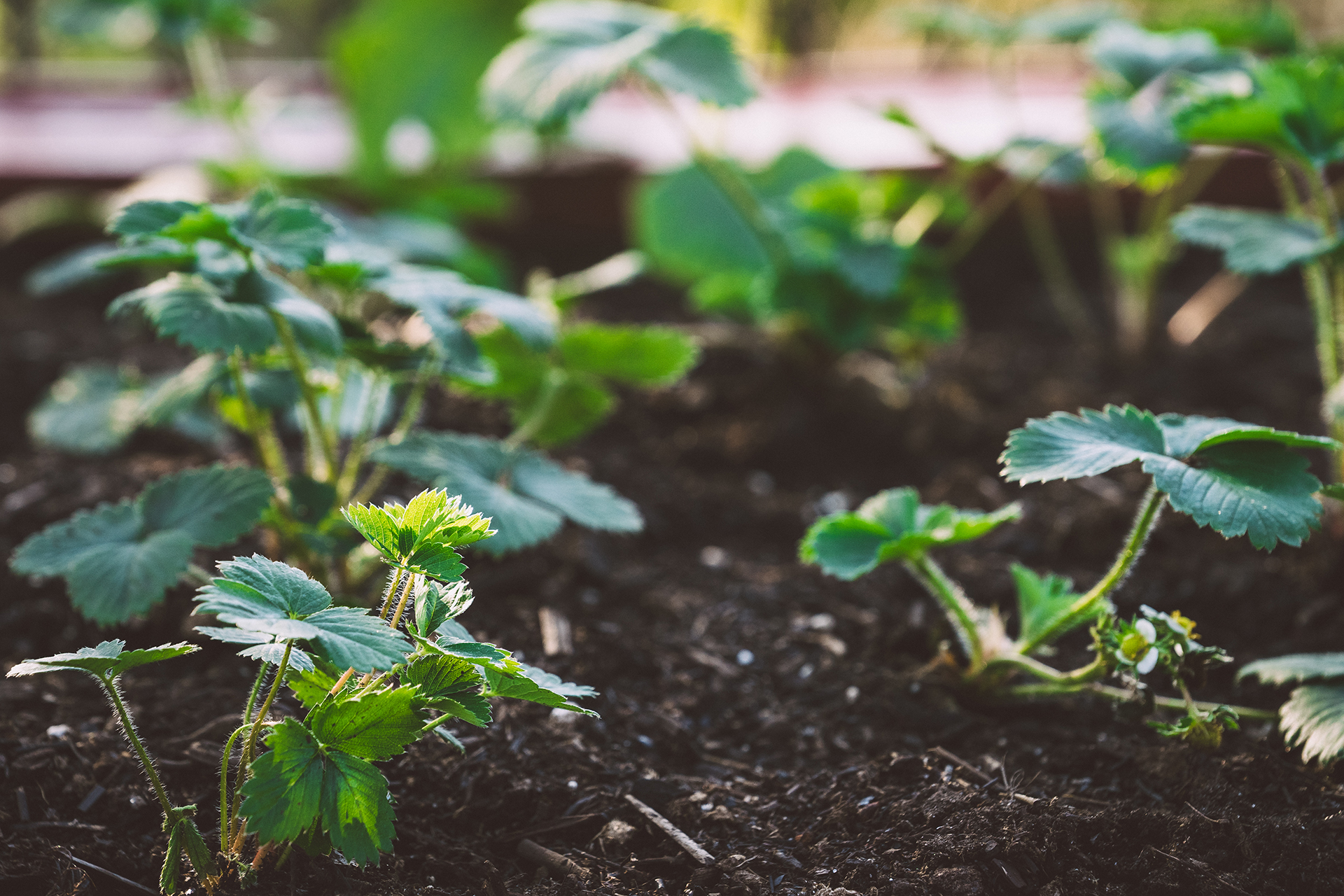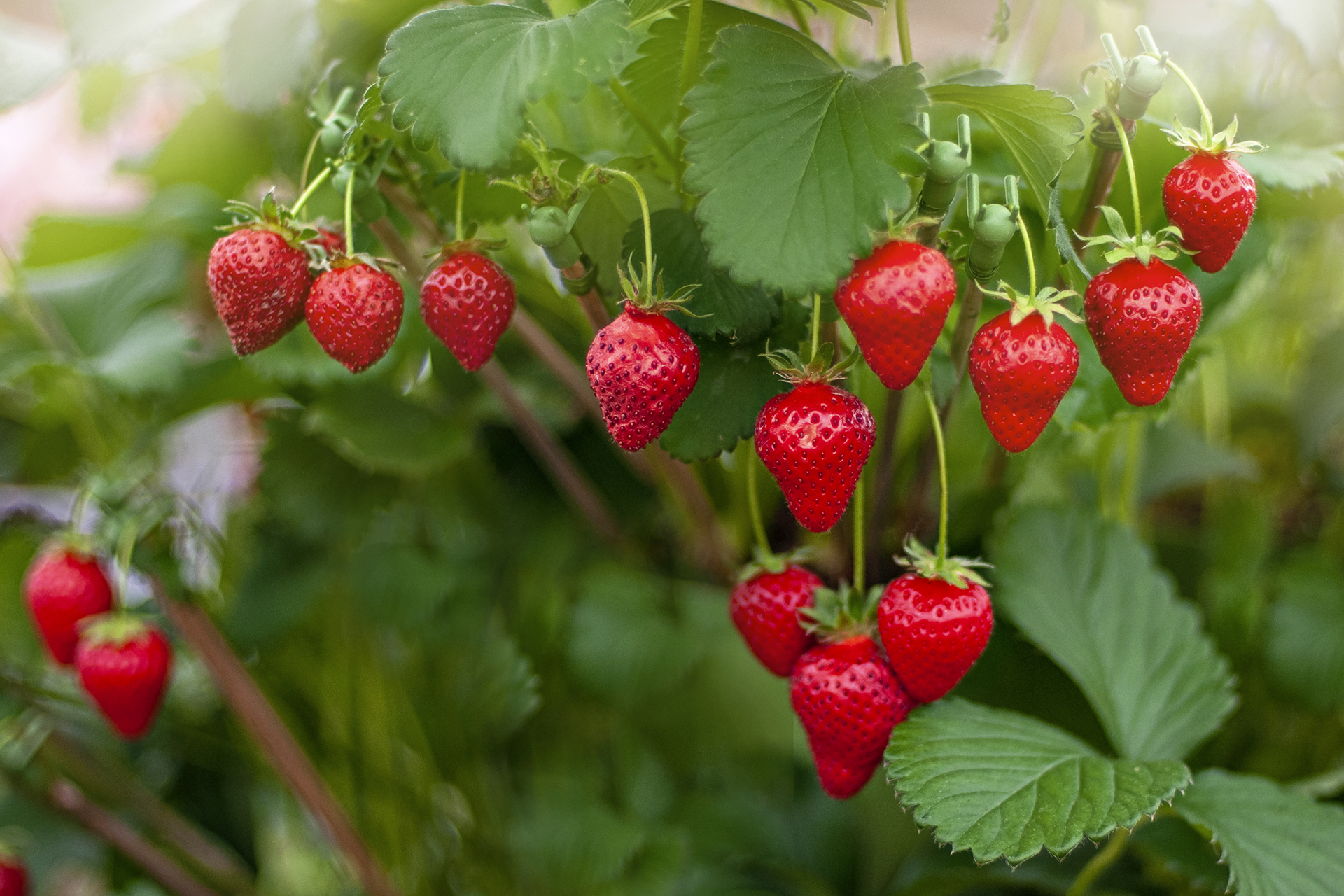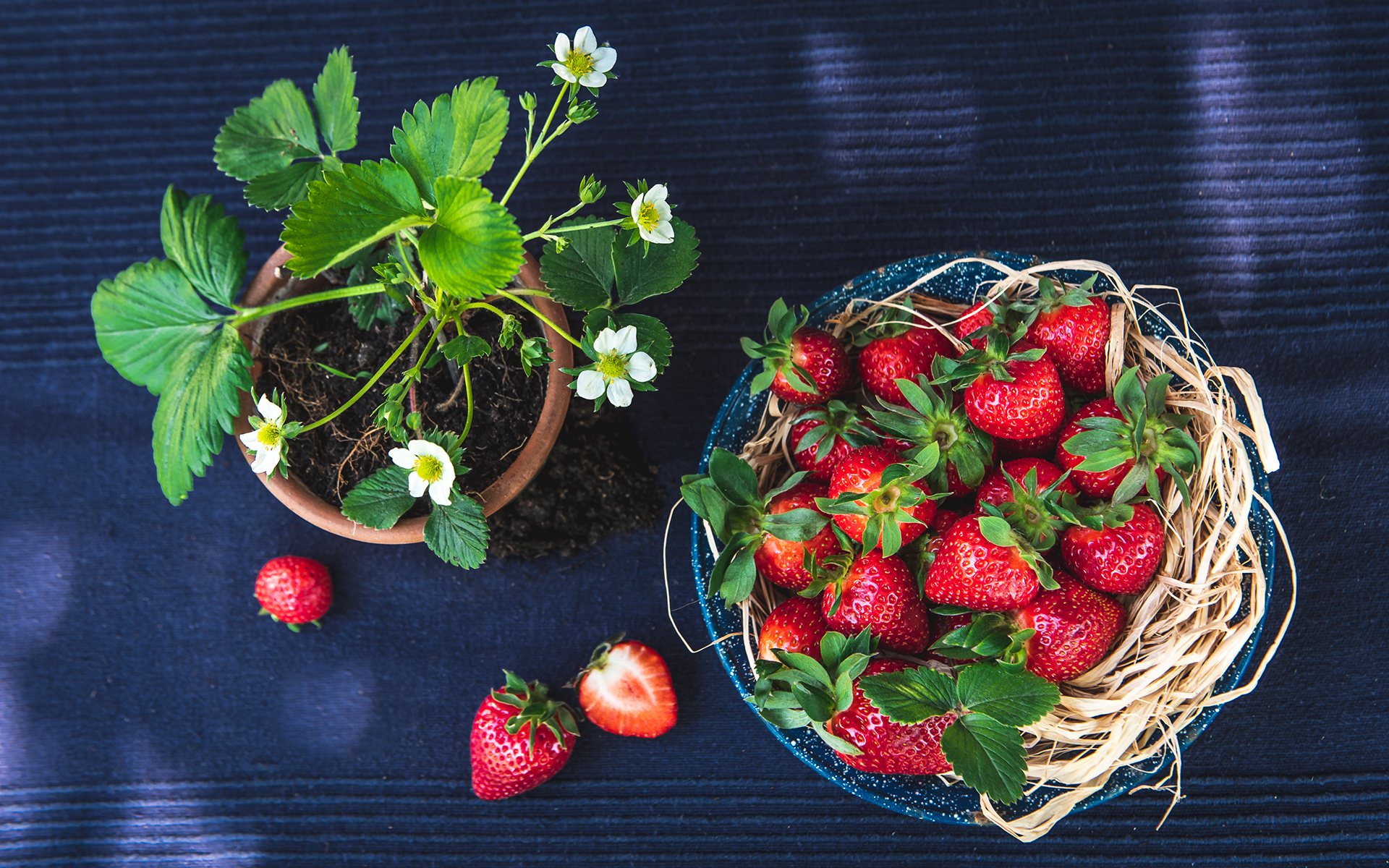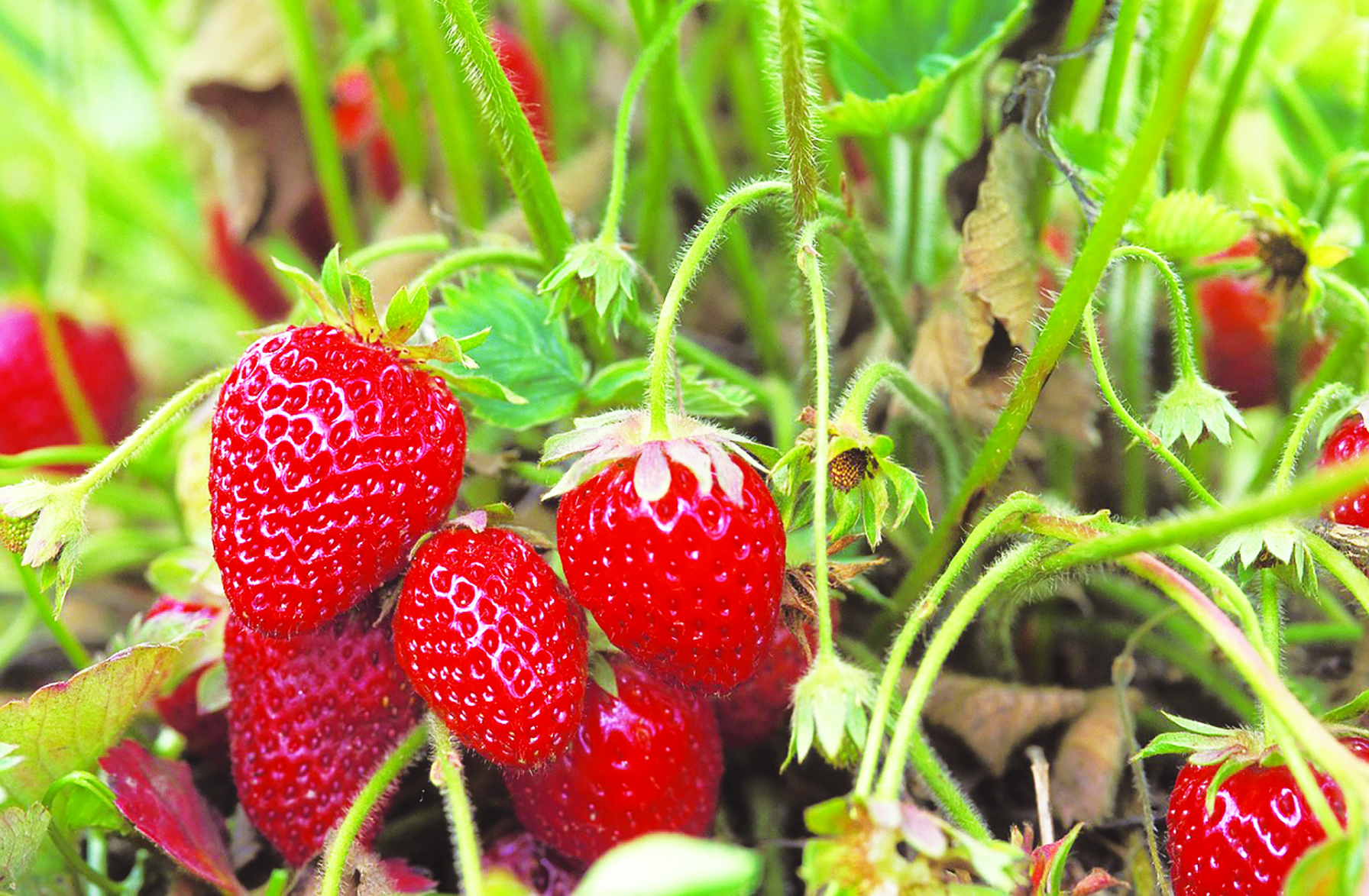How to grow strawberries – from seed or runners
Learn how to grow strawberries with our helpful guide – you'll be enjoying delicious home-grown fruit fresh from your plot in no time


It's easy to learn how to grow strawberries – and it's no surprise that they're amongst the most popular crops to grow at home, as there is nothing quite as a delicious as a freshly picked strawberry on a summer morning.
'Strawberries have to be everyone’s favorite fruit to grow and they work well in towers, hanging bags and vertical gardens,' says PL gardening expert Leigh Clapp, and thankfully they're very easy to grow. Below we tell you how to grow strawberries in your own garden with our beginner's guide so that you can add this luscious crop to your kitchen garden ideas. Also, as an easy and popular fruit to grow, knowing when to plant strawberries is important for a bumper harvest.
How to grow strawberries – the different methods, explained

There are three different methods to pick from when deciding how to grow strawberries. You can grow them from seed, from bare root or from runners. The method you choose for how to grow strawberries depends on where you wish to plant them and the time of the year.
Seeds are best grown in spring, bare root plants are best planted in late winter (about a month before your expected last frost) and runners (which are created from an existing plant) are best planted in summer once the parent plants have established.
No matter which method you settle on for how to grow strawberries they all need 'rich fertile soil and a sunny spot,' advises Leigh Clapp.
How to grow strawberries from seed
Learning how to grow strawberries from seed is the cheapest method to have lots of strawberry plants, however it is also the method that requires the most patience as strawberry seeds can take up to a month to germinate. Strawberry seeds can be sowed anytime from January through to April.

There are several tricks to help increase the speed and likelihood of germination.
Design expertise in your inbox – from inspiring decorating ideas and beautiful celebrity homes to practical gardening advice and shopping round-ups.
Try placing the strawberry seeds – in their packet – in a sealed plastic bag and place in the refrigerator for a month. This will trick the seeds into thinking that winter has come and gone. After this time remove and keep the bag sealed until it has reached room temperature. Prepare seed compost in a tray and sow the seeds on the top of the soil. Do not cover the seed. Cover the tray with a propagator and keep warm, moist and light until the seeds germinate – sometime within two to three weeks. They will be ready to pot on to their permanent positions within two months.
'Grow strawberries in full sun in fertile, moist, well drained soil at a distance of 30cm (12") apart,' advises Sue Sanderson from Thompson & Morgan.

If you're looking for instant vegetable garden ideas, bear in mind that strawberries grown from seed will fruit in their second year. Strawberries are cold hardy plants and go dormant throughout the winter months. They will survive milder winters with small amounts of frost.However, if you live in an area that has harsher winters, consider covering your strawberry plants with frost-fleece in order to protect them.
How to grow strawberries from runners

Established strawberry plants produce lots of runners during their growing period. If left to their own devices these can either grow into strawberry plants or can shrivel and die. It all depends on whether they have good and consistent contact with soil. This makes it very easy to propagate new strawberry plants from your established plants.
Learning how to grow strawberries from runners is very simple. First pick a strawberry plant with a healthy runner – it will look like a long horizontally growing stem with the starts of leaves at the end.
Then, all you have to do is fill a small plant pot to the brim with compost and water well. Having done this lay the end of the runner in the centre of the plant pot and pin in place with a U-shaped staple or bent piece of wire.
It is vital that you keep the runner stem linked to the parent plant until the new plant has developed its own strong root system as these will enable it to fend for itself once severed from the parent.
Once separated, place in a sunny spot and keep well watered, repotting as necessary.
How to grow strawberries from bare root

Learning how to grow strawberries from bare root is one of the most versatile ways to grow strawberries. Bare root strawberries can be mail ordered throughout the dormant period – between February and April.
'Bare root means they come not in a pot, and not with soil or compost around them. This means you can get lots delivered in a very small parcel,' explains Matthew Oliver, horticulturist at RHS Hyde Hall, in this video. These plants must be planted immediately after receipt or else 'the roots will desiccate out and the plants will die,' continues Matthew.
To plant your bare root plants, simply fill a medium sized plant pot – that is at least the depth of the bare root plant – with peat-free potting compost and fully cover the roots in soil. Be sure to keep the crown of the plant – the point where both the roots and the leaves start above the surface of the soil.
Once potted up, 'they will live in the cold frame throughout winter,' advises Matthew, before being brought into the glasshouse towards the end of winter. 'The extra heat in the greenhouse will help to spur the plants into life and you should get a crop for around easter time'.
Alternatively, if you do not have a greenhouse, treat the bare root plants the same way on receipt, and then plant directly into the garden come March. These will fruit a little later at around June or July.

It is also worth noting that there is another type of bare root strawberry - the cold stored strawberry. These can be planted from late spring to early summer and will likely already have flowers in tact. Within 60 days of planting, these cold-stored bare root strawberries will fruit. While cold-stored bare root strawberries fruit early in their first year, they will then revert to a traditional growing and fruiting pattern in subsequent years.
How long does it take for a strawberry plant to bear fruit?
It takes around 3 months for a bareroot strawberry plant to bear fruit. Strawberry plants raised from seed will produce fruit in their second summer as the plant requires its first year to establish and grow. The same applies to summer propagated runners which will be establishing their fruit.

Do strawberries come back every year?
Yes, strawberry plants are perennial so will come back every year. The average strawberry plant has a lifespan of about six years, though after the first two their will be a notable drop in the amount of fruit produced. Some gardeners therefore prefer to treat their strawberry plants as annuals, growing a new stock each year. Taking runners from your established plant will ensure that you always have a young crop producing its best fruit.

Having graduated with a first class degree in English Literature, Holly started her career as a features writer and sub-editor at Period Living magazine, Homes & Gardens' sister title. Working on Period Living brought with it insight into the complexities of owning and caring for period homes, from interior decorating through to choosing the right windows and the challenges of extending. This has led to a passion for traditional interiors, particularly the country-look. Writing for the Homes & Gardens website as a content editor, alongside regular features for Period Living and Country Homes & Interiors magazines, has enabled her to broaden her writing to incorporate her interests in gardening, wildlife and nature.